Incarnation
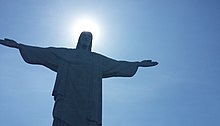
Incarnation literally means embodied in flesh or taking on flesh. It refers to the conception and birth of a sentient creature who is the material manifestation of an entity, god or force whose original nature is immaterial. In its religious context the word is used to mean the descent from Heaven of a god, or divine being in human/animal form on Earth. The Pharaohs of Ancient Egypt were sometimes said to be incarnations of the Sun gods Horus and Ra. The Incarnation of Christ is a central Christian doctrine that God became flesh, assumed a human nature, and became a man in the form of Jesus Christ, the Son of God and the second person of the Trinity. In Hinduism, incarnation generally refers to an avatar of Vishnu or Ganesha. Collectively, the 10 avatars of Vishnu are known as the dashavatara. In the Bahá'í Faith, God is described as a single, imperishable God, the creator of all things, including all the creatures and forces in the universe. In the teaching of the Buddha sentient beings incarnate due to the psychological factors of ignorance, craving and clinging which results in the phenomenon of becoming and rebirth. Mainstream Islam completely rejects the doctrine of the incarnation of God in any form, as the concept is defined as shirk.

Quotes
[edit]- Quotes are arranged alphabetically by author
A - F
[edit]

- He was made man in order that we might be made gods.[Christ] manifested himself by a body that we might receive the idea of the unseen Father; and He endured the insolence of men that we might inherit immortality.
- Saint Athanasius of Alexandria, Church Father and Doctor of the Church, De Incarnatione, 54.3
- The purpose and cause of the incarnation was that He might illuminate the world by His wisdom and excite it to the love of Himself.
- Peter Abelard, in Alister E. McGrath Christian Theology: An Introduction, John Wiley & Sons, 14 January 2011, p. 232
- Jesus did not spend a great deal of time discoursing about the trinity or original sin or the incarnation, which have preoccupied later Christians. He went around doing good and being compassionate.
- Karen Armstrong, in Steve PaulsonAtoms and Eden: Conversations on Religion and Science, Oxford University Press, 5 October 2010, p. 63
- The Self-revealing of the Word is in every dimension - above, in creation; below, in the Incarnation; in the depth, in Hades; in the breadth, throughout the world. All things have been filled with the knowledge of God.
- St. Athanasius, in The Incarnation of the Word of God, Republished Classics, 23 November 2014, p. 27
- The Christian response is contained in these two fundamental dogmas: that of the Trinity and that of the Incarnation. In the trinitarian dogma God is one, good, true, and beautiful because he is essentially Love, and Love supposes the one, the other, and their unity.
- Hans Urs von Balthasar, in David L. Schindler Hans Urs Von Balthasar: His Life and Work, Ignatius Press, 1991, p. 4.
- Christians believe there is an afterlife. Although the body dies and is buried or cremated, they believe that their unique soul lives on and is raised to new life by God.
Their belief that Jesus rose from the dead three days after his crucifixion (a Roman method of execution) gives Christians hope that if they follow Jesus’ teaching and accept him as their Lord and Saviour, then this new resurrection life awaits them. By being born as a human being (the incarnation), and then dying on the cross, Jesus made this new ‘life after death’ possible for all.
- In the Platonic anthropology, the first incarnation of the soul occurs in a masculine body, and only a subsequent incarnation, marking a later descent of the soul into the world of bodies, is feminine.
- Ugo Bianchi, in Dualism Religion, Encyclopædia Britannica, 14 January 2013
- I have come that they may have life and have it more abundantly
- Bible ((John x, 10) in:Of the Incarnation as part of the Fitness of Things, University of Notre Dame
- Jesus continues in his incarnation even after the resurrection, albeit in a different corporeal form. The incarnation did not cease with the cross and the tomb; it continues in transcendental glory.
- Mary Birmingham, in Word and Worship Workbook for Year B: For Ministry in Initiation, Preaching, Religious Education, Paulist Press, 1999, p. 359
- Jesus’ incarnation and ministry thus present us with the final critique of strategic religion; on the cross, where we see God almost deliberately ‘lose’ – as if duped into being strung up by a scheming, fearful group of clerics – we see the end of power games. God will not play. I sincerely believe that if the Church allows itself to be tied up in strategies, into ‘winning’ people for Christ, it will end inexorably moving towards power-politics, towards support for wars, and away from genuine concern for the ‘other’.
- Kester Brewin, in Other: Loving Self, God and Neighbour in a World of Fractures, Hachette UK, 10 June 2010, p. 118.
- The alternative view of human nature may be termed dualistic. It conceives of the individual person as comprising an inner essential self or soul, which is nonmaterial, and a physical body. In many religions] based on this view of human nature, the soul is regarded as being essentially immortal and as existing before the body was formed. Its incarnation in the body is interpreted as a penalty incurred for some primordial sin or error. At death the soul leaves the body, and its subsequent fate is determined by the manner in which it has fulfilled what the particular religion concerned has prescribed for the achievement of salvation. This view of human nature and destiny finds most notable expression in Hinduism and, in a subtly qualified sense, in Buddhism; it was also taught in such mystical cults and philosophies of the Greco-Roman world as Orphism (an ancient Greek mystical movement with a significant emphasis on death), Gnosticism (an early system of thought that viewed spirit as good and matter as evil), Hermeticism (a Hellenistic esoteric, occultic movement), and Manichaeism (a system of thought founded by Mani in ancient Iran).
- Incarnation, central Christian doctrine that God became flesh, that God assumed a human nature and became a man in the form of Jesus Christ, the Son of God and the second person of the Trinity. Christ was truly God and truly man. The doctrine maintains that the divine and human natures of Jesus do not exist beside one another in an unconnected way but rather are joined in him in a personal unity that has traditionally been referred to as the hypostatic union.
- The Editors of Encyclopædia Britannica, in Incarnation,Encyclopædia Britannica
- The word Incarnation (from the Latin caro, “flesh”) may refer to the moment when this union of the divine nature of the second person of the Trinity with the human nature became operative in the womb of the Virgin Mary or to the permanent reality of that union in the person of Jesus. The term may be most closely related to the claim in the prologue of the Gospel. According to John that the Word became flesh—that is, assumed human nature.
- The Editors of Encyclopædia Britannica, in "Incarnation"
- The essence of the doctrine of the Incarnation is that the preexistent Word has been embodied in the man Jesus of Nazareth, who is presented in the Gospel. According to John as being in close personal union with the Father, whose words Jesus is speaking when he preaches the gospel.
- The Editors of Encyclopædia Britannica, in "Incarnation"
- The development of a more refined theology of the Incarnation resulted from the response of the early church to various misinterpretations concerning the question of the divinity of Jesus and the relationship of the divine and human natures of Jesus. The Council of Nicaea (AD 325) determined that Christ was “begotten, not made” and that he was therefore not creature but Creator. The basis for this claim was the doctrine that he was “of the same substance as the Father.” The doctrine was further defined by the Council of Chalcedon (AD 451), at which it was declared that Jesus was perfect in deity and in humanity and that the identity of each nature was preserved in the person of Jesus Christ. The affirmation of the oneness of Christ with God and with humanity was made while maintaining the oneness of his person.
- The Editors of Encyclopædia Britannica, in "Incarnation"
- Greatness by nature includes a power, but not a will to power....The great man, whether we comprehend him in the most intense activity of his work or in the restful equipoise of his forces, is powerful, involuntarily and composedly powerful, but he is not avid for power. What he is avid for is the realization of what he has in mind, the incarnation of the spirit.
- Martin Buber, in Between Man and Man, Routledge (September 2, 2003)
- When all is said and done, science is about things and theology is about words. Things behave in the same way everywhere, but words do not. Quantum mechanics works in all cultures, while theology works in one culture alone. If you have not grown up in Polkinghorne's culture, where words such as "incarnation" and "trinity" have a profound meaning, you cannot share his vision.
- Freeman Dyson, in Richard J. Coleman State of Affairs: The Science-Theology Controversy, Wipf and Stock Publishers, 24 October 2014, p. 256.
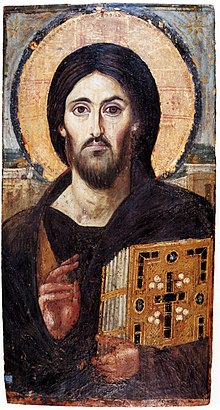
- The Incarnation is the mystery and the dogma of the Word made Flesh. ln this technical sense the word incarnation was adopted, during the twelfth century, from the Norman-French, which in turn had taken the word over from the Latin incarnatio.
- Catholic Encyclopedia , in Catholic Encyclopedia: The Incarnation - New Advent, New Advent
- The Incarnation implies three facts: (1) The Divine Person of Jesus Christ; (2) The Human Nature of Jesus Christ; (3) The Hypostatic Union of the Human with the Divine Nature in the Divine Person of Jesus Christ.
- Catholic Encyclopedia , in "Catholic Encyclopedia: The Incarnation - New Advent"
- The effect of the Incarnation on the human will of Christ was to leave it free in all things save only sin. It was absolutely impossible that any stain of sin should soil the soul of Christ. Neither sinful act of the will nor sinful habit of the soul were in keeping with the Hypostatic Union. The fact that Christ never sinned is an article of faith.
- Catholic Encyclopedia , in "Catholic Encyclopedia: The Incarnation - New Advent"
- The will of Christ remained free after the Incarnation. This is an article of faith.
- Catholic Encyclopedia , in "Catholic Encyclopedia: The Incarnation - New Advent"
- Basically there can be no categories such as 'religious art' and 'secular' art, because all true art is incarnational, and therefore 'religious'.
- Madeleine L'Engle, in John Fesperman Organ Planning: Asking the Right Questions, Church Publishing, Inc., p. 31
- There is nothing so secular that it cannot be sacred, and that is one of the deepest messages of the Incarnation.
- Madeleine L'Engle, in Evangelicals Engaging Emergent, B&H Publishing Group, 1 May 2009, p. 27
- I believe in God - not in a Catholic God; there is no Catholic God. There is God, and I believe in Jesus Christ, his incarnation. Jesus is my teacher and my pastor, but God, the Father, Abba, is the light and the Creator. This is my Being.
- Pope Francis, in The Pope: how the Church will change, Fai di Repubblica la tuah, 1 October 2013
- Christmas in w:BethlehemBethlehem. The ancient dream: a cold, clear night made brilliant by a glorious star, the smell of incense, shepherds and wise men falling to their knees in adoration of the sweet baby, the incarnation of perfect love.
- Lucinda Franks, in Reed Markham The Book of Christmas Hope, Lulu.com, p. 63
G - L
[edit]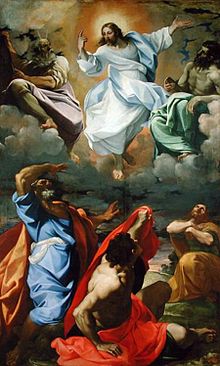
- We must primarily become seekers of God instead of founders of works, for work will not sustain us through the traumas of incarnation.
- Viv Grigg, in Scott A. Bessenecker Living Mission: The Vision and Voices of New Friars, InterVarsity Press, 3 August 2010, p. 27
- The most destructive criticism has not been able to dethrone Christ as the incarnation of perfect holiness. The waves of a tossing and restless sea of unbelief break at His feet, and He stands still the supreme model, the inspiration of great souls, the rest of the weary, the fragrance of all Christendom, the one divine flower in the garden of God.
- Herrick Johnson, in Herrick Johnson (1832-1913), adinapoli.it, and also in 'Dictionary of Burning Words of Brilliant Writers (1895)
- Thus the word reveals the Divine Essence; His incarnation makes that Life, that Love, that Light, which is eternally resident in God obvious to souls that steadily contemplate Himself. These terms Life, Love, Light — so abstract, so simple, so suggestive — meet in God; but they meet also in Jesus Christ. They do not only make Him the centre of a philosophy; they belong to the mystic language of faith more truly than to the abstract terminalogy of speculative thought. They draw hearts to Jesus; they invest Him with a higher than any intellectual beauty.
- Henry Parry Liddon, in The Divinity of Our Lord and Saviour Jesus Christ, Rivingtons, 1868, p. 233
M - R
[edit]
- The incarnation is true, not of Christ exclusively, but of Man universally, and God everlastingly.
- James Martineau, in Alan P.F. Sell Aspects of Christian Integrity, Wipf and Stock Publishers, 13 May 1998, p. 45
- Priesthood is not a convenient, historically conditioned form of Church organisation, but is rooted in the Incarnation, in the priesthood and mission of Christ himself.
- Arthur Middleton, in David Novak Talking with Christians: Musings of a Jewish Theologian, SCM Press, 28 January 2006, p. 236
- The Church's note must be a supernatural note which distinguishes incarnation from immanence, redemption from evolution, the Kingdom of God from mere spiritual process.
- Arthur Middleton, in Alan P. F. Sell Confessing the Faith Yesterday and Today: Essays Reformed, Dissenting, and Catholic, Casemate Publishers, 1 September 2013, p. 109
- I believe that through discipline, though not through discipline alone, we can achieve serenity, and a certain small but precious measure of the freedom from the accidents of incarnation, and charity, and that detachment which preserves the world which it renounces.
- Robert Oppenheimer, in a letter to his brother Frank (12 March 1932), published in Robert Oppenheimer : Letters and Recollections (1995) edited by Alice Kimball Smith, p. 155
S - Z
[edit]
- The trouble with most Englishwomen is that they will dress as if they had been a mouse in a previous incarnation they do not want to attract attention.
- Edith Sitwell, in Jennifer Paull Cathy Berberian and Music's Muses, Jennifer Paull, 2007, p. 52.
- Without God, listening to that Christmas sermon was a vinegar experience. Without the incarnation, Christianity isn't even a very good story, and most sadly, it means nothing. "Be nice to one another" is not a message that can give my life meaning, assure me of love beyond brokenness, and break open the dark doors of death with the key of hope. The incarnation is an essential part of Jesus-shaped spirituality.
- Michael Spencer, in Mere Churchianity: Finding Your Way Back to Jesus-Shaped Spirituality, Doubleday Religious Publishing Group, 1 June 2010, p. 92
- The incarnation has many wonderful aspects...the incarnation is the complete refutation of every human system and institution that claims to control, possess, and distribute God. Whatever any church or religious leader may claim in regard to their particular access to God or control over your experience of God, the incarnation is the last word: God loves the world. God came into the world in the form of the people he created, the human race (including you and me), who bear his image. God's creation of humanity in his image gives hints of who he is, since we all are marked by his fingerprints.
- Michael Spencer, in Mere Churchianity: Finding Your Way Back to Jesus-Shaped Spirituality, Doubleday Religious Publishing Group, 1 June 2010, p. 90
- But as flawed humans, we give only a vague hint of God. Our broken reflection of God's image is easily drowned out by our broken humanity. then, two thousand years ago, God came in his fullness. He came to all of us in Jesus. The incarnation is not owned, trademarked, or controlled by any church. It belongs to every human being. The incarnation is not something that requires a distributor or middleman. It is a gracious gift to every person everywhere, religious or not. God gave himself to us in Jesus.
- Michael Spencer, in "Mere Churchianity: Finding Your Way Back to Jesus-Shaped Spirituality", p. 91
- The symbol of the sun circle, one of the most prevalent artistic representations of the sacred king, and the practice of addressing the king as “my sun” are well depicted in rock reliefs and inscriptions in areas ruled by the Hittite kings. The Persian king was regarded as the incarnation of the sun god or of the moon god. In addition to sky or sun deities, the sacred king also has been identified with other gods: the town god (Mesopotamia), the gods of the country, the god of the storm, and the weather god.
- Claus Westermann, in Sacred kingship, Alternate title: divine kingship, Encyclopædia Britannica
- As on many mornings in Marin, there is this sly strip of fog - water in it's most mystical incarnation - slithering over, around, and through the hills, making everything look ancient and unsolved.
- Jaimal Yogis, in Saltwater Buddha: A Surfer's Quest to Find Zen on the Sea, Wisdom Publications Inc, 10 April 2009, p. 11
- Christians believe that the estrangement between heaven and earth ended with the Incarnation, Passion, Resurrection, and Ascension of Christ: “in Christ God was reconciling the world to himself” (2 Corinthians 5:19).
- Carol Zaleskiin: Heaven - Christianity, Encyclopædia Britannica (September 25, 2013)
In Buddhism
[edit]
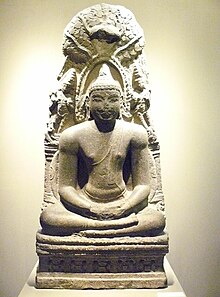
- The most important lineage of reincarnation was derived from the basic Buddhist idea of rebirth — the concept of the reimbodiment of a saintly predecessor's existence in a reincarnation of the same being in a new appearance, discovered anywhere in a child born at the right time and recognized by the leading monks and Lamas.
- M. G. Chitkara, in Buddhism, Reincarnation, and Dalai Lamas of Tibet, APH Publishing, 1 January 1998, p. 1
- The Buddhist theory of re-incarnation is mainly rooted in the theory of Karma.
- Taglung Tsetrul Rinpoche quoted, in "Buddhism, Reincarnation, and Dalai Lamas of Tibet", p. 17
- Beside the 'regular' clergy exists a special class of ecclesiastical dignitaries — the 'incarnations' or living Buddhas who are at the summit of the lamaist hierarchy and who, in right of their very origin differ from the rest.
A Qubilghan, is in fact the representative in flesh and blood, of some Buddha, Bodhisattva, god or saint, whose spirit is incarnated in him at the moment of his birth, and will pass, at his death, into the body of the child destined to become his successor in the functions fulfilled by him. The incarnation is thus less a matter of person than function.- Alice Getty, in The Gods of Northern Buddhism: Their History and Iconography, Courier Corporation, 1988, p. 36
- According to the Northern Buddhist school, there are both mortal and celestialBodhisattvas. A mortal Bodhisattva is one who has manifested himself on earth in human (manushi) form, in a series of incarnations, until such a time as he has acquired sufficient merit and enlightenment to receive Buddhahood. Like Gautama Buddha in his incarnation of the arhat Sumedha, the Bodhisattva may have been, in a former re-birth, an arhat bent on his own salvation who, becoming inspired with the desire for Bodhi in order to save mankind, renounced his arhant-ship.
- Alice Getty, in "The Gods of Northern Buddhism: Their History and Iconography", p. 44
- A text of Tibetan Buddhism describes the time of death as a unique opportunity for spiritual liberation from the cycles of death and rebirth and a period that determines our next incarnation.
- Stanislav Grof, in Stanislav Grof Psychology of the Future: Lessons from Modern Consciousness Research, SUNY Press, 20 July 2000, p. 224.
- The institution of "reincarnating lamas" unique to Tibetan Buddhism and best known to the general public in the case of the Dalai Lama, is very widespread. The great teacher, considered to be an emanation of a celestial Buddha orBodhisattva, is successively incarnated, generation after generation, in the young child selected as his successor and trained almost from infancy for that role. No leaders in Tibetan Buddhism receive greater respect, devotion, and honour, or have greater power and influence than these ”incarnations”, especially those who are heads of major lineages in important monasteries
- Rita M. Gross, in Buddhism After Patriarchy: A Feminist History, Analysis, and Reconstruction of Buddhism, SUNY Press, 1993, p. 88-89
- The final form of the (Mahayana) Buddhist doctrine of incarnation is the idea of trikaya, three bodies: first, “Transformation Body,” the earthly Buddha, a transient and illusionary form of existence; second, “Enjoyment Body,” the form of existence for the sake of others; and third, “Dhamma Body,” the ultimate form of existence that indeed is no longer a “form” of existence but formless.
- Veli-Matti Kärkkäinen, in Christ and Reconciliation, Wm. B. Eerdmans Publishing, 2013, p. 270

- The ordinary samsaric mind sees the human body as just a tool with which to chase material, social, and biological needs, all of which satisfy only superficial levels of the spirit. Their effects do not pass beyond the gates of death. We have to learn to appreciate the intrinsic spiritual quality of human nature, to have a subtle confidence in the positive, creative aspect of our being. It is difficult to enter spiritual training if one regards one's life as having no purpose other than the pursuit of ephemeral, transient goals, as does a rat who builds a strong nest and then drags home all sorts of trinkets to it. In order to break the mind of this vain, mundane attitude towards life, we sit in meditation and contemplate first the eight freedoms and ten endowments, and then the meaningful and rare nature of a human incarnation.
- Dalai Lama, in The Path to Enlightenment, Snow Lion Publications, 25 December 1994, p. 178
- If we do not practice now while we have an incarnation most suitable to the attainment of enlightenment, what hope do we have for progress in the future? Many types of sentient beings, such as dogs and insects that live near a temple, meet with the teachings but, not having an appropriate physical or mental basis, they are unable to comprehend them or put them to use.
- Dalai Lama, in "The Path to Enlightenment", p. 36
In Hinduism
[edit]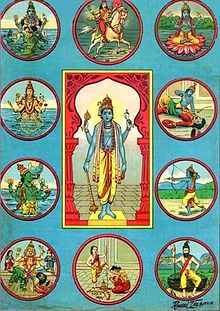
- The sunlight ranges over the universe, and at incarnation we step out of it into the twilight of the body, and see but dimly during the period of our incarceration; at death we step out of the prison again into the sunlight, and are nearer to the reality.
- Annie Besant, in The Theosophical Writings of Annie Besant, Jazzybee Verlag, 2012, p. 335
- The major religions that hold a belief in reincarnation, are Asian religions, especially Hinduism, Jainism, Buddhism, and Sikhism, all of which arose in India. They all hold in common a doctrine of karma (karman; “act”), the law of cause and effect, which states that what one does in this present life will have its effect in the next life. In Hinduism the process of birth and rebirth—i.e., transmigration of souls—is endless until one achieves moksha, or liberation (literally “release”) from that process. Moksha is achieved when one realizes that the eternal core of the individual (atman) and the Absolute reality (brahman) are one. Thus, one can escape from the process of death and rebirth (samsara).
- The Editors of Encyclopædia Britannica Reincarnation - Alternate titles: metempsychosis; transmigration,Encyclopædia Britannica
- Avatar, Sanskrit avatāra (“descent”), in Hinduism, the incarnation of a deity in human or animal form to counteract some particular evil in the world. The term usually refers to these 10 appearances of Vishnu: Matsya (fish), Kurma (tortoise), Varaha (boar), Narasimha (half man, half lion), Vamana (dwarf), Parashurama (Rama with the axe), Rama (hero of the Ramayana epic), Krishna (the divine cowherd), Buddha, and Kalkin (the incarnation yet to come).
- Encyclopædia Britannica in:Avatar - Alternate title: avatāra, Encyclopædia Britannica
- The number of Vishnu’s avatars is sometimes extended or their identities changed, according to local preferences. Thus, Krishna is in some areas elevated to the rank of a deity and his half brother, Balarama, included as an avatar.
- Encyclopædia Britannica in: "Avatar - Alternate title: avatāra"
- One formulation of the doctrine is given in the religious poem the Bhagavad Gita when charioteer Lord Krishna tells Arjuna: “Whenever there is a decline of righteousness and rise of unrighteousness then I send forth Myself. For the protection of the good, for the destruction of the wicked, and for the establishment of righteousness, I come into being from age to age.”
- Encyclopædia Britannica in: "Avatar - Alternate title: avatāra"
- Instead of a just king and a perfect man, Rāma is an incarnation of Vishnu and an intense object of devotion, dwarfing the Vedic gods; Kampaṉ called his work Irāmāvatāram (“Rāma’s Incarnation”); yet the emphasis is not on Vishnu but on dharma (“the law”), localized and Tamilized.
- J.A.B. van Buitenen, in South Asian arts, 16 March 2014
The Hindus: An Alternative History
[edit]Wendy Doniger, in The Hindus: An Alternative History, Oxford University Press, 30 September 2010.
- Both of them revert to their divine status, but in opposite places. When Brahma is chastising Rama for doubting Sita, he reassures Rama that Sita is an incarnation of the goddess Lakshmi and will be reunited with him in heaven.
- In: p. 231
- ... all conscience and moralizing, and Kumbhakarna (Ravana's monstrous brother, who sleeps for years at a time and wakes only to eat and fight) is a superb literary incarnation of the bestial id.
- In: p. 246
- Dharma, the god, must undergo the curse for miscarriage of dharma. Being born as a human is different both from fathering a child (as Dharma fathersYudhishthira) and from spinning off an incarnation (as Vishnudoes for Rama and Krishna), ...
- In: p. 279
- A slave girl who functions as a dispensable, low-class stand-in (like theNishadas burned in the house of lac) gives birth toVidura, the incarnation of Dharma in fulfillment ofMandavya's curse that he should be born as the son of a Shudra...
- In: p. 294
- The myth of Vishnu's incarnation as the Buddha is established in full detail in the Vishnu Parana, represented on the sixth- to seventh-century Dashavatara temple at Deogarh and mentioned in a seventh century Pallava inscription and an eight century Tamil inscription.
- In: p. 482
In Jainism
[edit]- Jainism reflects a belief in an eternal and transmigrating life principle (jiva) that is akin to an individual soul—holds that karma is a fine particulate substance that settles upon the jiva according to the deeds that a person does. Thus, the burden of the old karma is added to the new karma that is acquired during the next existence until the jiva frees itself by religious disciplines, especially by ahimsa (“nonviolence”), and rises to the place of liberated jivas at the top of the universe.
- The Editors of Encyclopædia Britannica, in Reincarnation - Alternate titles: metempsychosis; transmigration, Encyclopædia Britannica
In Sikhism
[edit]- Sikhism teaches a doctrine of reincarnation based on the Hindu view but in addition holds that, after the Last Judgment, souls—which have been reincarnated in several existences—will be absorbed in God.
- The Editors of Encyclopædia Britannica, in Reincarnation - Alternate titles: metempsychosis; transmigration, Encyclopædia Britannica
In Islam
[edit]- Muslims believe that there are no intermediaries between God and the creation that he brought into being by his sheer command, “Be.” Although his presence is believed to be everywhere, he is not incarnated in anything. He is the sole creator and sustainer of the universe, wherein every creature bears witness to his unity and lordship. But he is also just and merciful: his justice ensures order in his creation, in which nothing is believed to be out of place, and his mercy is unbounded and encompasses everything.
- Fazlur Rahman, in Islam, Encyclopædia Britannica (April 1, 2014)
- Ahl-e Ḥaqq, (Arabic: “People of Truth,” or “People of God”), a secret, [[w:Syncretistic|syncretistic religion, derived largely from Islām, whose adherents are found in western Iran, with enclaves in Iraq. They retain the 12 imams of the Ithnā ʿAsharīyah sect and such aspects of Islāmicmysticism as the communal feast. Central to their religion, however, is a belief in seven successive manifestations of God. They further believe in the transmigration of souls, asserting that every person must pass through 1,001 incarnations, in the course of which he receives the proper reward for his actions.
- Encyclopædia Britannica, in Ahl-e Ḥaqq, Encyclopædia Britannica (September 2, 2014)
- Idrīs (and Enoch) has also been woven into the Islamic mythology surrounding the Greco-Egyptian god Hermes Trismegistos as the first incarnation of the tripartite Hermes.
- Encyclopædia Britannica, in Idrīs Islamic mythology, Encyclopædia Britannica

